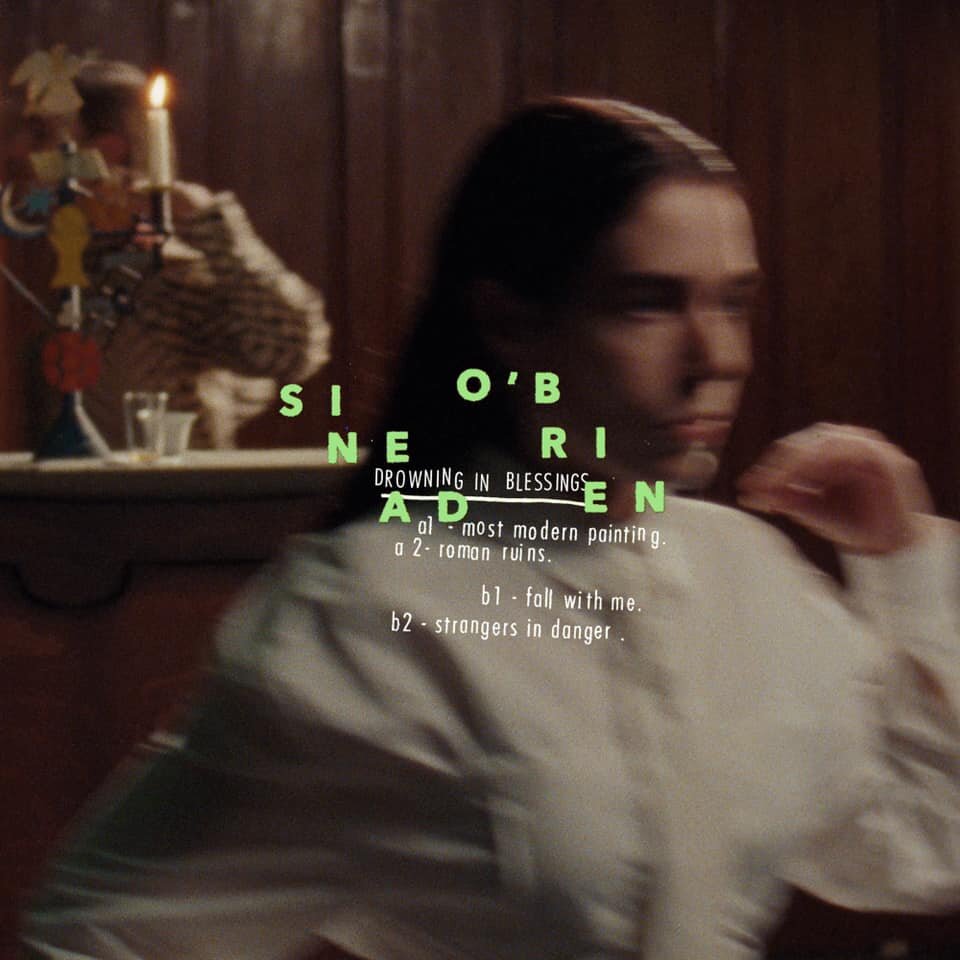by Dominic Acito (@mycamgrlromance)
In 1978, with Jim Morrison having passed seven years prior, the surviving members of The Doors would enter the studio to record what would turn out to be the controversial An American Prayer album. Upon release, it was understandably difficult for fans to digest an album of songs that took spoken word pieces by the deceased icon and set them to music the singer couldn’t have exactly intended. Still, reviewers are divided on the album. There are moments, although brief, where it feels like The Doors and Morrison are fully in step with one another and in those moments, it’s tempting to believe that these were how Morrison would have intended an album to sound.
Sinead O’Brien’s EP, Drowning in Blessings, captures the feeling of An American Prayer at it’s very best, trading the 60s-psychedelic rock for a danceable post-punk sound and Morrison’s Beat-era influenced poetry for O’Brien’s unique brand of lyricism that draws from a deep understanding of the classics as well as punk music’s greatest poets. Her distinct accent and Sprechgesang (German for “spoken singing”) style cause many to introduce her as the “Irish Singer/Poet”. While it seems almost impossible for anyone to talk about her music without mention of her accent and distinct singing, O’Brien tows the line as the musicality of her words is even apparent in her written work as exemplified in her piece for London Magazine where she describes an early morning trip to the airport which feels as though it calls to be sung and set to music.
O’Brien is often compared to Patti Smith. Smith set the standard for rock musicians who brought poetic sensibilities to the stage, so it’s an apt comparison, but O’Brien’s music seems to be more a cut from the same fabric as many of her contemporaries like Protomartyr and Fontaines DC, bands that take inspiration from The Fall; combining slick post-punk with poetry. Yet while they seem to exude the same energy, O’Brien’s style is so distinct it would be difficult to confuse her songs with anyone else’s. O’Brien’s own description of the music as “David Lynch at night driving really fast” is revealing of the emotions with which she’s imbuing the songs: a strong feeling of movement but with a surrealist bend.
Her lyrics tend to have a strong visual influence. In a March 2020 interview with DIY Magazine she described a song inspired by ”…an image in a library which had all of these giant heads on a rotating wheel.” That same song makes references to cats calling out to each other among Roman ruins with a guitar letting out a screeching sound that could be mistaken for just that - evoking the feeling of the once ancient Roman temples now a cat sanctuary. With songs about modern paintings and Roman ruins, O’Brien invites us to take a look at artifacts that remain static while the world goes on around them.
Drowning in Blessings is a collection of songs that would be equally at home in art galleries and dance clubs alike. The only risk of playing a Sinead O’Brien song at a dance club is that the powerful imagery laced lyrics are often potent enough to stop you in your tracks mid-dance.
While the EP is only four tracks long, it leaves a lasting impact as the style of writing is at once familiar and fresh. Sinead O’Brien is the type of artist that, when the mood strikes you to listen, there is no one else who can satisfy that specific, jangly, Television style, David Lynchian post-punk thirst. It’s a thrilling listen with music that feels fresh yet familiar and leaves one with the impression that there is an exciting new artist in the world.

